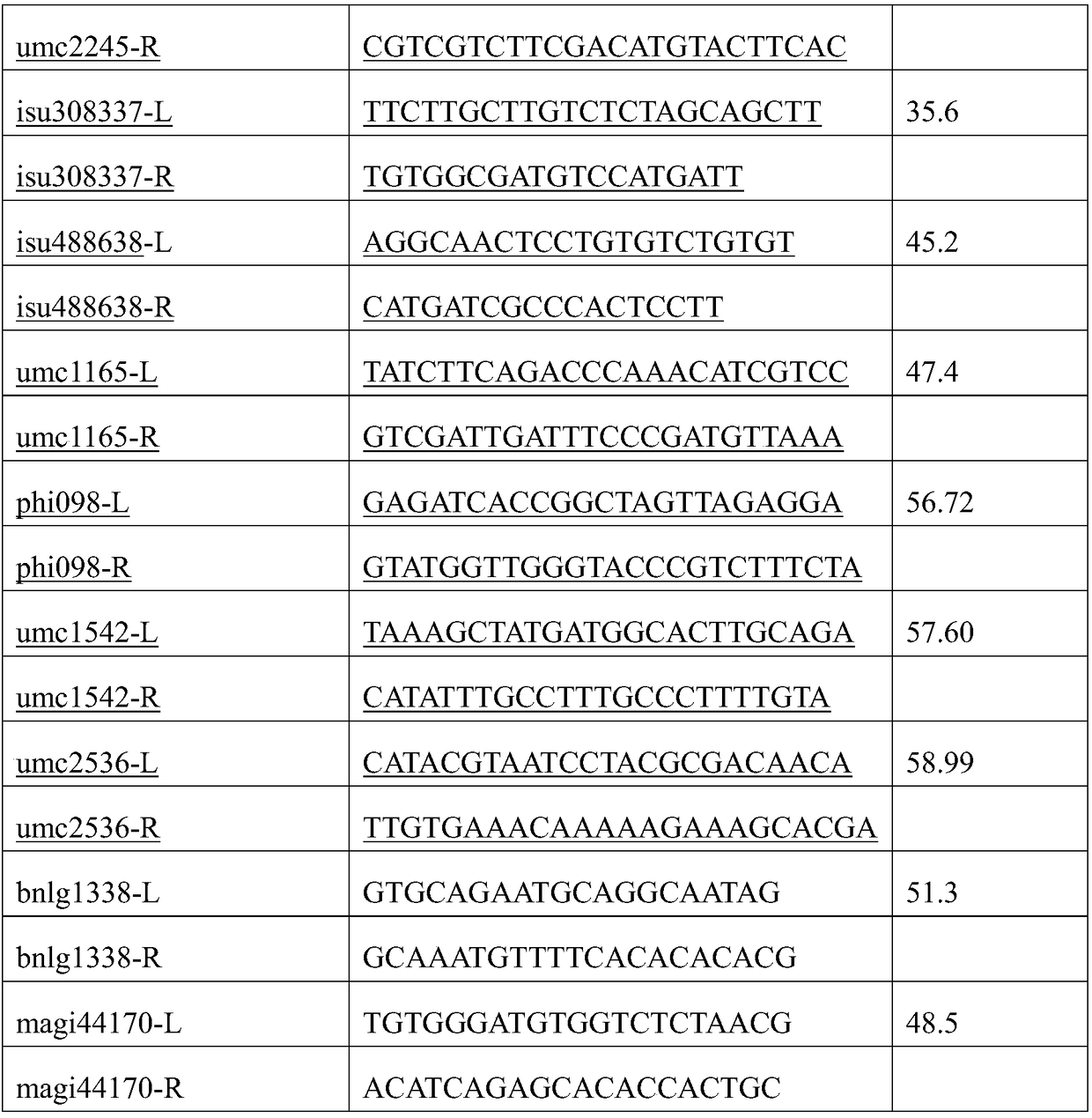Method for rapid breeding of maize leafless tongue inbred lines with assistance of molecular markers
A molecular marker-assisted and molecular marker technology, applied in the field of molecular genetics, can solve the problems of long selection time, long cycle, low efficiency, etc., and achieve the effect of improving accuracy and saving time for line selection
- Summary
- Abstract
- Description
- Claims
- Application Information
AI Technical Summary
Problems solved by technology
Method used
Image
Examples
Embodiment 1
[0027] Example 1 Screening of maize ligule lg1 gene SSR molecular markers
[0028] 1. Using the maize genome database MaizeGDB (http: / / www.maizegdb.org / ), select a total of 9 SSR molecular markers in the upstream and downstream intervals with a close genetic distance to the lg1 gene located at the end of the short arm of the second chromosome of maize.
[0029] Table 1 The positions and primer sequences of the upstream and downstream markers of the ligule gene lg1
[0030]
[0031]
[0032] Note: The position indicates the relative genetic position in IBM2 2008 Neighbors Frame 2 on the MaizeGDB website, where the lg1 gene is 50.9
[0033] Genomic DNA was extracted from the B73 ligule-less mutant rla1 and the inbred lines (Jing 2416 and Jing 92), and the above-mentioned molecular markers were used to optimize and screen PCR reaction conditions. Tongjing 2416 and Jing 92 are polymorphic, well-resolution SSR molecular markers that are close to the genetic distance of the lg1...
Embodiment 2
[0040] Example 2 Breeding of maize liguleless inbred lines
[0041] 1. Acquisition of hybrid offspring F1
[0042] In the summer of the first year, maize inbred line rla1 (non-recurrent parent, without ligule) was used as donor, and Jing 2416 (available from the Corn Research Center of Beijing Academy of Agriculture and Forestry Sciences) (recurrent parent, with ligule) was used as recipient. Combination F 1 Generation, Harvest F 1 generation of seeds.
[0043] The first generation in Hainan in the winter of the same year, planting F 1 generation seed, get F 1 Substitute maize plants.
[0044] 2. Obtain the BC1 generation by backcrossing once
[0045] (1) Backcross
[0046] The F1 generation plants were used as the female parent, and continued to backcross with the recurrent parent Jing 2416, and the seeds of the BC1 generation were harvested. In the winter of the same year, the second generation in Hainan planted the seeds of the BC1 generation population to obtain th...
PUM
 Login to View More
Login to View More Abstract
Description
Claims
Application Information
 Login to View More
Login to View More - R&D
- Intellectual Property
- Life Sciences
- Materials
- Tech Scout
- Unparalleled Data Quality
- Higher Quality Content
- 60% Fewer Hallucinations
Browse by: Latest US Patents, China's latest patents, Technical Efficacy Thesaurus, Application Domain, Technology Topic, Popular Technical Reports.
© 2025 PatSnap. All rights reserved.Legal|Privacy policy|Modern Slavery Act Transparency Statement|Sitemap|About US| Contact US: help@patsnap.com



